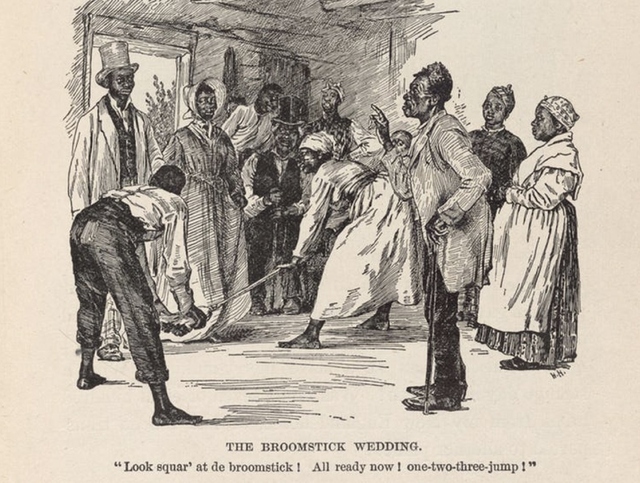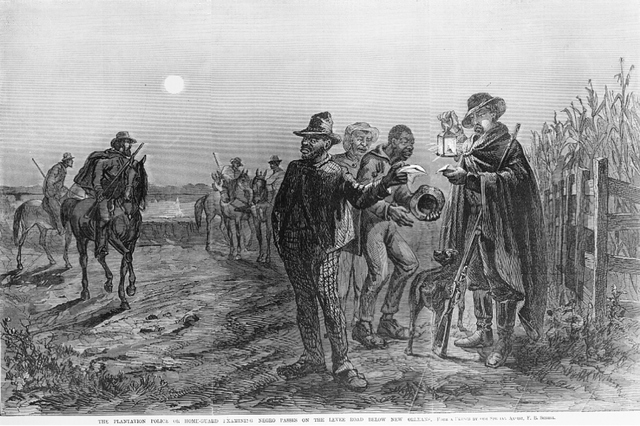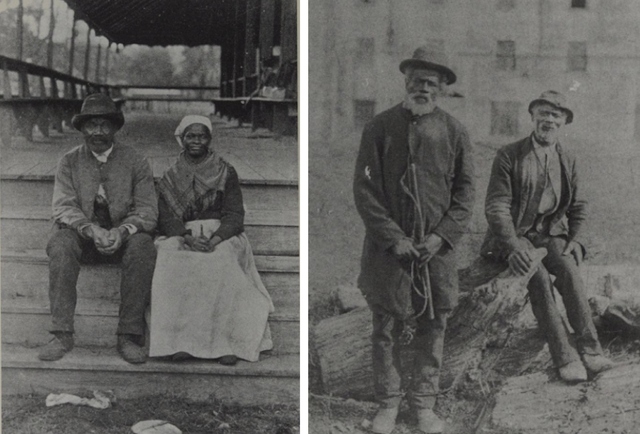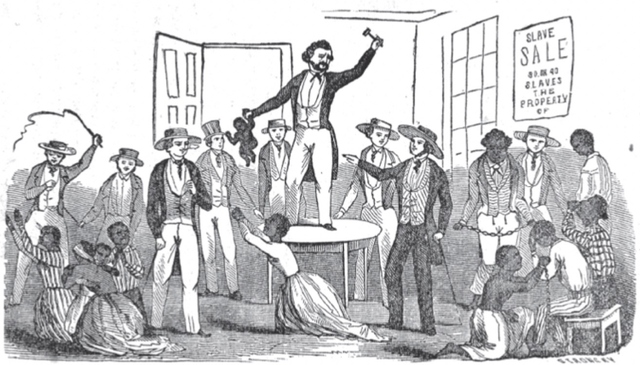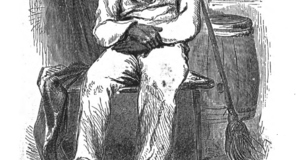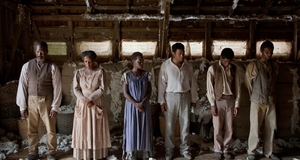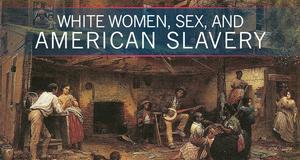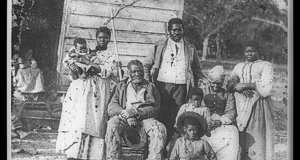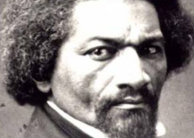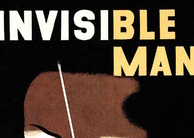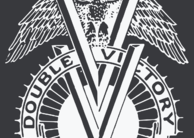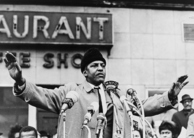Bonds of Slavery and Bonds of Love: Investigating the Role of African-American Families and Marital Unions in the Struggle Against Slavery
By
2020, Vol. 12 No. 11 | pg. 1/1
IN THIS ARTICLE
KEYWORDS
AbstractResistance to oppression is often found in the most unlikely of places. This article investigates the significance that families and partnerships played in fostering the emotional support necessary to sustain enslaved peoples throughout the onslaught of slavery in the antebellum South. Despite the ever-present threat of separation and sale that sought to split families and spouses apart, the bonds of love that enslaved African-Americans held and shared were not easily severed. This examination of the lived experiences of enslaved folk demonstrates that the creation, mutability, and endurance of enslaved families and partnerships constitutes perhaps the greatest form of ‘successful’ struggle and resistance against the slave system. The institution of slavery – with all associated oppressions and injustices – does not, on the surface, seem conducive to the creation of marital bonds and family structures. After all, slavery was designed to strip enslaved individuals of personal dignity and emotional connection with families and partners that may be argued to constitute the very essence of humanity. Put differently, slavery primed its bondsmen and women for ‘social death’1 – virtually a requirement for slavery to function effectively and without challenge. Families and marital partnerships, however, fostered in enslaved folk enduring love and a restoration of dignity, reinstating a sense of humanity. To draw on Vizenor’s terminology, the very survivance2 of the African-American family within the slavery institution - against all odds - demonstrated an incredibly powerful form of struggle through the resurrection of humanity and arguable evasion of social death. Through an analysis of family structure and marital unions in the antebellum slavery South, however, African-American families can be seen to adapt, live on, even flourish, despite seemingly insurmountable adversity designed to bring about its destruction. In so doing, creation, adaption, and endurance of familial units and marital unions demonstrate perhaps the greatest form of ‘successful’ struggle within the slavery context. This is not to paint an overly-romanticised picture of African-American families during slavery. As Du Bois observes, the apologists’ “picture of cabin life, with idyllic devotion and careless toil” obscures the terrible reality of “family disruption and cruelty”3 advanced by other, more ideologically abolitionist, scholars. The truth likely operates somewhere in the middle. What Constitutes Enslaved Familial Survival?African-American families and marital unions provided escape and sanctuary to enslaved folk from the emotional turmoil, often resembling Patterson’s conceptualisation of ‘social death,’ inflicted through the slave system.4 Through “soothing the souls of chattel property,”5 familial existence and cohesion was, within itself, a powerful form of struggle. Owens reflects this aptly, through his observation that “family members gain personal strength from being loved and trusted by one another, and the family unit serves as a shield against outside attacks.”6 There is an accurate historical consensus within the scholarly literature that families “took a tremendous beating,”7 with the threat and actuality of separation through sale an almost integral feature of enslaved families themselves. Combined with the ever-present threat of sexual violence of white men, the enslaved family was rendered “the most fragile of institutions.”8 Yet, “slaves were never passive in response…they fought back.”9 For every threat or obstacle thrown at the African-American family or partnership, they had an answer.Figure 1. “That’s all there was to it!”10 Lithograph depicting the ‘jumping of the broom’ ceremony culturally officiating a marital union.11 Within marital unions – defined to encompass committed conjugal relationships12 whether legalised by white legislation or not13 - sale of one’s (or one of one’s) partner or children were commonplace.14 Hunter notes that wedding vows were appropriately adapted to “until death or distance do you part.”15 Quantitatively, on data from plantations encompassing Tennessee, Mississippi, and Louisiana, thirty-two percent of enslaved marriages were disrupted by sale of a partner.16 The remaining majority, however, remained ‘unbroken,’ with unions persisting “over a long period of time.”17 There were many attempts at resisting separation symbolised by the auction block. The enslaved Moses Grandy recalled that his mother “hid us all in the woods, to prevent master selling us,”18 while another slave “chopped off some of his toes”19 in an effort to avoid being parted from his family. Such displays of struggle, however, were usually unsuccessful. Moses’ master had persuaded his mother to ‘come in’ under the pretence he would not sell them, a promise he immediately retracted, separating the family through sale.20 Planters also responded by giving only a few hours’ notice to those selected for sale, and detaining them until transport.21 Slave partnerships could further be separated through the death of one’s spouse. Malone’s cross-sectional study of Southern plantations led her to conclude high mortality rates were “the most destructive force in slave marriages.”22 While unfeeling masters motivated by profit that separated families and marriage unions were the norm, there are minor examples within the historical record reflecting owner understanding that separation was harmful to the wellbeing of slaves, and recognition that by keeping families together, enslaved individuals were more likely to remain compliant and profitable to slave enterprises. Planter J.T Jeter, moving his residence from his New Orleans plantation to Pointe Coupee Parish, decided to only take his unmarried servants with him, acknowledging that those part of married unions “did not want to come,” and to force them “would make them dissatisfied.”23 Occasionally, a master would endeavour to ‘buy back’ a husband or wife from another planter to reunite a marriage. One letter sent to Colonel Barksdale spoke on behalf of the enslaved Israel: “he seems to be so much attached to [his wife] we would like very much for her to be hired near him…would you sell the woman?”24 Whether in the long term such instances can be construed as a display of ‘successful’ struggle against slavery remain ambiguous: together or not, African-Americans remained tightly bound to the slavery structure, with little opportunity for escape. But the profound impact of decisions that allowed enslaved folk to stay together – thereby ensuring the survivance of families and retainment of emotional connections – cannot be overlooked. Torn Apart, Yet Still ConnectedFranklin theorises that “the permanency of a slave marriage depended on the extent to which the couple had an opportunity to work and live together so that through common experiences they could be drawn closer together.”25 Here, Franklin implicitly suggests that enslaved marriages could only constitute ‘survivance’ and ‘effective’ struggle against the slave structure to the extent couples were not separated. This is highly problematic, as it ignores the fact that slave marriages and families - embedded with enduring love and emotional connection - persisted, even through experiences of geographical separation. Two primary examples can be utilised to illuminate this. Firstly, there is ample evidence of successful ‘abroad’ marriages, whereby husband and wife lived on different plantations, yet cultivated and maintained their bonds by visiting one another on respective plantations.26 Commitment to one’s spouse carried great distances, with evidence from one planter’s letter noting that his men walked thirty-two miles “to be with their wives on Saturdays.”27 ‘Abroad’ visitation privileges, however, were subject to the discretion of white planters. Former enslaved individual Millie Barber recalled that her father had faced punishment for being on her mother’s plantation without a pass: “they stripped him right befo’ mammy and give him thirty-nine lashes.”28 Robert Pringle, a South Carolinan master, sold a young enslaved woman to Portugal, under the precedent that “she had a practice of going frequently to her Father and Mother, who Live at a Plantation…about Twenty Miles…there was no Restraining her from Running away there and Staying every now and then.”29* Figure 2. All enslaved movements, including visiting families or partners at other plantations, required passes that were closely scrutinised by suspicious and vindictive white men.30 Further, marriages – both ‘abroad’ and at ‘home’ – were frequently violated by the sexual assaults of white plantation men. The “usurpation of the marriage bed” was regarded by those enslaved as the “most detested manifestation of the slaveholders’ power.”31 This operated as a “constant reminder”32 to African-American families that they did not possess the power to protect wives and daughters from such violence. This is exemplified by the recollections of an enslaved husband who experienced a white man infiltrating his cabin, demanding to have intercourse with his wife.33 The husband, explaining his powerlessness to the situation, “couldn’t do nothin’ bout it,”34 for resistance against white perpetrators had severe consequences. Another enslaved husband from Concordia, who protested against the rape of his wife, was “tied up by his thumbs and whipped to death by an overzealous overseer.”35 Sexual violence did, unsurprisingly, adversely affect enslaved partnerships, with women often blamed by their husbands or lovers for the assaults they were subjected to.36 Violence also manifested itself within slave unions, with frequent cases of domestic abuse documented in planter records.37 It also carried with it the potential to end marriages, as was the case for Samuel Adams, who ended his marriage after his wife gave birth to a mulatto child.38 Evidence suggests this manifested in a tendency of husbands to prefer ‘abroad’ marriages,39 in order to avoid being confronted with this phenomenon directly. Here, the sanctity of enslaved marriages, and the restoration of dignity for African-American husbands and wives, can be appropriately questioned. But the fact that the vast majority of marriages evidentially persisted - in spite of Franklin’s theory of the requirement for ‘shared common experiences’ – points conclusively to the fact that love and connection within partnerships continued to successfully endure. Secondly, many enslaved individuals – despite widespread illiteracy - connected with their separated partners through letters, of which the historical record displays ample examples. For instance, Hannah Blair, residing in Tennessee, wrote the following to her husband in 1861: We received the letter that your Master so kindly wrote to us and you can not ever think how glad we was to hear from you and Jake. I had almost given up the thought of ever hearing from you again…Our boy grows finely. I do wish you could see him but as that cannot be I will learn him to always remember you, he has not forgot you… Letters were also the site for appeals to be reunited with one’s spouse. Sargry Brown voiced her plea to be reunited with her husband in 1840:
Harriet Newby expressed a similar sentiment in 1859: Dear Husband…I want you to buy me as soon as possible, for if you do not get me some body else will…It is said master is in want of money. If so, I know not what time he may sell me, and then all my bright hopes of the futer are blasted, for their has been one bright hope to cheer me in all my troubles, that is to be with you… Whilst these letters clearly demonstrate enduring connection between partners, and the desire of reunification, for most partnerships, they would remain apart. In the case of Sargry Brown, her letter never reached her husband, as it was found in Washington’s Dead Letter Office.43 For Harriet Newby, her husband would be killed two months later, and after Harriet’s letter was found on his body, she was consequently sold South.44 The case of Emily and Adam Plummer, however, was more fortunate. Practising an ‘abroad’ marriage, Adam would walk the eight miles weekly to Emily’s plantation to see her. After several ever more distant sales, ending with an 1855 sale near Baltimore, Adam was rarely granted permission to visit.45 They maintained their connection through letters for eight years, until Emily was manumitted in 1863, reuniting with her husband, with whom she would stay by his side until her death in 1876.46 An excerpt from an 1861 letter expresses the enduring connection and unyielding love Emily and Adam shared, in which their experience could be justifiably considered ‘successful’ struggle: My ever dear Husband, I have been hoping each day to hear from you. We are all well. The babies grow and improve rapidly…I think each day I cannot longer wait for a visit from you. My heart aches at the thought of this long and painful separation…Could you come up early some Sunday morning to breakfast?...but under any circumstances write very frequently. It is our next great pleasure to seeing your kind face, and hearing your voice of affection. Your truly affectionate wife, Partnerships did not always survive through the hardships imposed upon them through slavery. Solomon Northup recalled that although ‘Uncle Abram’ had fortnightly permission to visit his wife on a plantation seven miles away, “he had latterly well nigh forgotten her.”48 Here, as Frances Smith-Foster’s discussion of Henry Bibb strongly reinforces, distance and hardship did not intrinsically hold the power to destroy a marriage, “but…giving up the struggle could.”49 New Ways of defining African-American FamilyDespite such intractable obstacles, enslaved individuals demonstrated a continual tendency to form familial units. Malone’s comprehensive study of families in Louisiana identifies a marked trend towards increasing simple, standard nuclear, and complex forms of family structures.50 Between the 1810s and 1820s, the enslaved population comprising standard family households rose to 84 percent of the total enslaved population.51 Perhaps most illuminatingly, this movement toward internal cohesion and family formation extended beyond the simple nuclear family of husband, wife, and often children. Whilst standard nuclear family structures (at least in Louisiana) were the “preferred family form,”52 there was also a marked decline in members of the enslaved population that had not fostered familial connections.53 Familial variations became diverse, “adaptive and creative,”54 and so thoroughly mutable that almost all enslaved persons – except for the rather rare case of the ‘solitaire’55 – were absorbed into family and household units made up of close kin,56 both real and ‘fictive.’57 Granted, it could be argued, as Malone herself addresses, that slaves were usually assigned living quarters, rather than forming households out of free choice.58 It is equally true however, as the historical evidence has made abundantly clear, that enslaved folk re-organised and reconstituted themselves into smaller, more distinct variations of families and households, of their own accord.59 Families consistently “searched for surrogates…giving greater emphasis to extended and adoptive familial strategies.”60 Figures 3 and 4. Family took many forms. Left: a simple-family, comprising solely of a husband and wife.61 Right: a non-nuclear family, of two brothers.62 In Louisiana, siblings living together were the most common form of non-nuclear family.63 Separation through slavery was also the culprit for many children being raised without their immediate, biological family. As Owens observes, many “bondsman ha[d] only faint memories of their parents.”64 Legislature often stipulated that the separation of children from their parents under the age of five or twelve (dependent on State legislation) was prohibited, and protected – at least, in theory – by “heavy pains and penalties,”65 but were usually completely ignored.66 Figure 5. An illustration depicting an auction that separates an infant from their mother, from Henry Bibb’s autobiography.67 On the surface, this lends itself to the interpretation of the destruction of the family unit. When children were sold, they were very unlikely to ever be reunited with their parents.68 However, this interpretation omits both the diversity of family units - which often encompassed other blood relatives including uncles, aunts and cousins - and the fact that children, where no blood relatives were present, were frequently ‘claimed’ by other enslaved adults, becoming ‘fictive’ kin to separated children.69 As Berlin identifies, slave communities shared the consensus that “at any time they might be required to assume the role of mother or father…for a child to whom they are unconnected by blood or marriage.”70 ‘Mingo’ was sold as a child from his family, but was taken in by family-friend John White, who, acting as fictive kin, provided Mingo with “the only carin’ that I had or ever known anything about…My pappy tol’ him to take care of me for him.”71 Such adoption of children, and absorption into new families demonstrated the persistence of family units – although in adapted form – an unmistakable act of struggle and familial survivance against the slavery institution. Taken together, this analysis operates in strong opposition to early assessments on the condition of the African-American family, purported by scholars such as Gutman and Franklin, who suggest: “although…some [slave] men and women may have tried to create a meaningful domestic life under barbarous conditions, their efforts were doomed to failure. Such heroic struggles might be admired, but to presume that they succeeded was romantic fantasy purveyed by either softheaded sentimentalists or unabashed apologists for southern slavery.”72 By the same token, the evidence neither reflects enslaved families as “the cozy American family unit of mom, dad, and the kids.”73 The truth resides somewhere in the middle. The experience of enslaved families and partnerships were diverse and divergent. The idea sometimes perpetuated - that enslaved family life was reduced to a mere extension of the owner’s will74 - can be more accurately understood as the site of active struggle at every turn, with enslaved folk “refusing, as best they could, to allow their most intimate and treasured relationships to be hostage to their owner’s whim.”75 Whilst slavery exhibited a devastating effect on African-American families, strength, struggle and survivance - against almost insurmountable adversity – is clear. If it was, as according to Miller, only “by destroying the Negro family under slavery” that the will of African-Americans could be broken,76 this was unsuccessful. Partnerships and families were there – although often in modified forms - “in the darkest hours of adversity…in sorrow and joy…in trial and persecution…in sunshine and shade.”77 Through such struggle, the resurrection of dignity and humanity found within and through families remained determinedly intact: a powerful legacy of enduring love and connection that lives on through the evidence enslaved folk left behind. ReferencesAuthor unknown. “Broomstick Wedding in Virginia.” Slavery Images: A Visual Record of the African Slave Trade and Slave life in the Early African Diaspora, 1840s. Available from: http://slaveryimages.org/s/slaveryimages/item/637 Berlin, Ira., and Rowland, Leslie. Families and Freedom: A Documentary History of African-American Kinship in the Civil War Era. New York: New Press, 1997. Berlin, Ira., Favreau, Marc., and Miller, Steven. Remembering Slavery: African-Americans Talk About Their Personal Experiences of Slavery and Freedom. New York: The New Press, 1998. Berry, Mary Frances., and Blassingame, John W. Long Memory: The Black Experience in America. New York: Oxford University Press, 1982. Bibb, Henry. Narrative of the Life and Adventures of Henry Bibb, an American Slave, Written by Himself. North Carolina: Chapel Hill Publishing, 2018 [1849]. Blassingame, John W. The Slave Community: Plantation Life in the Antebellum South. New York: Oxford University Press, 1972. Du Bois, W.E.B. On Sociology and the Black Community. Chicago: University of Chicago Press, 1978. Du Bois, W.E.B. The Negro American Family. New York: Negro Universities Press, 1969. Formation Following Emancipation.” Demography 55, no. 5 (2018): 1587-1609. Available from: https://www.ncbi.nlm.nih.gov/pubmed/30218275 Franklin, John Hope., and Moss, Alfred Jr. From Slavery to Freedom: A History of African Americans, Eighth edition. Boston: McGraw Hill Publishing, 2000. Fraser, Rebecca. Courtship and Love among the Enslaved in North Carolina. Jackson: Mississippi University Press, 2007. Available from: https://www.jstor.org/stable/j.ctt2tvm80 Genovese, Eugene D. Roll, Jordan, Roll: The World the Slaves Made. London: Andre Deutsch Limited, 1975. Gutman, Herbert G. The Black Family in Slavery and Freedom, 1750-1925. New York: Pantheon Books, 1976. Harding, Vincent. There is a River: The Black Struggle for Freedom in America. San Diego: Harcourt Brace and Company Publishing, 1981. Harris, William J, eds. Society and Culture in the Slave South. London: Routledge Limited, 1992. Available from: https://ebookcentral.proquest.com/lib/[SITE_ID]/detail.action?docID=166653 Hunter, Tera. “Writing of Labour and Love: Gender and African American History’s Challenge to Present Day Assumptions and Misinterpretations.” Souls 18, no.1 (2016): 150-154. https://www.doi.org/10.1080/10999949.2016.1162598 Hunter, Tera. Bound in Wedlock: Slave and Free Black Marriage in the Nineteenth Century. Cambridge: Harvard University Press, 2017. Johnson, Walter. Soul by Soul: Life Inside the Antebellum Slave Market. Massachusetts: Harvard University Press, 1999. Jones, Norrece T. Jr. “The Black Family as a Mechanism of Planter Control.” In Society and Culture in the Slave South, edited by William J Harris, 162-190. London: Routledge Limited, 1992. Available from: https://ebookcentral.proquest.com/lib/[SITE_ID]/detail.action?docID=166653 Kardiner, Abram. The Mark of Oppression: Explorations in the Personality of the American Negro. Cleveland: World Publishing Company, 1962. Kramer, John Theophilus. The Slave Auction. Boston: R.F Wallcut Publishing, 1859. Lane, Ann J, eds. The Debate over Slavery: Stanley Elkins and His Critics. Chicago: University of Illinois Press, 1971. Malone, Ann Patton. Sweet Chariot: Slave Family and Household Structure in Nineteenth-Century Louisiana. London: The University of North Carolina Press, 1992. Miller, Melinda C. “Destroyed by Slavery? Slavery and African American Family Formation Following Emancipation.” Demography 55, no. 5 (2018): 1587-1609. Available from: https://www.ncbi.nlm.nih.gov/pubmed/30218275 Owens, Leslie Howard. This Species of Property: Slave life and culture in the old south. New York: Oxford University Press, 1976. Patterson, Orlando. Slavery and Social Death: A Comparative Study. Massachusetts: Harvard University Press, 1985. Available from: https://hdl-handle-net.ezproxy.library.uwa.edu.au/2027/heb.03237 Schell, F.B. “Plantation police or home-guard examining negro passes on the Levee Road below New Orleans.” Frank Leslie’s Illustrated Newspaper, July 11, 1863. Available from: https://lccn.loc.gov/2009630225 Smith Foster, Frances. ‘Til Death or Distance do us Part: Love and Marriage in African America. New York: Oxford University Press, 2010. St. Vil, Noelle., and St. Vil, Christopher. “Posttraumatic Slave Syndrome, the Patriarchal Nuclear Family Structure, and African American Male-Female Relationships.” Social Work 64, no. 2 (2019): 139-146. Available from: https://www.ncbi.nlm.nih.gov/pubmed/30722067 Stamp, Kenneth. The Peculiar Institution: Negro Slavery in the American South. London: Eyre and Spottiswoode Publishing, 1964. Sterling, Dorothy. We Are Your Sisters: Black Women in the Nineteenth Century. New York: Norton, 1984. Trotter, Joe William. The African American Experience. Boston: Houghton Mifflin Company, 2001. Vizenor, Gerald. Survivance Narratives of Native Presence. Lincoln: University of Nebraska Press, 2008. Warren, Wendy. “Thrown Upon the World’: valuing infants in the eighteenth-century North American slave market.” Slavery and Abolition 39, no. 4: 623-641. https://doi.org/10.1080/0144039X.2018.1453963 West, Emily. Chains of Love: Slave Couples in Antebellum South Carolina. Baltimore: University of Illinois Press, 2004. Available from: https://www.jstor.org/stable/10.5406/j.ctt1xcqhq Endnotes1.) Orlando Patterson, Slavery and Social Death: A Comparative Study (Massachusetts: Harvard University Press, 1985), 38-46. 2.) Gerald Vizenor, Survivance Narratives of Native Presence (Lincoln: University of Nebraska Press, 2008), 50. 3.) W.E.B Du Bois, On Sociology and the Black Community (Chicago: University of Chicago Press, 1978), 200. 4.) Patterson, Slavery and Social Death, 38. 5.) Tera Hunter, Bound in Wedlock: Slave and Free Black Marriage in the Nineteenth Century (Cambridge: Harvard University Press, 2017), 152. 6.) Leslie Howard Owens, This Species of Property: Slave life and culture in the old south (New York: Oxford University Press, 1976), 191-2. 7.) Owens, This Species of Property, 182. 8.) Ira Berlin and Leslie Rowland, Families and Freedom: A Documentary History of African-American Kinship in the Civil War Era (New York: New Press, 1997), 4. 9.) Hunter, Bound in Wedlock, 28-9. 10.) Dorothy Sterling, We Are Your Sisters: Black Women in the Nineteenth Century (New York: Norton, 1984), 33. 11.) Author unknown, Broomstick Wedding, Virginia, 1840s, retrieved from:Slavery Images: A Visual Record of the African Slave Trade and Slave Life in the Early African Diaspora, accessed April 15, 2020, http://slaveryimages.org/s/slaveryimages/item/637 12.) This definition has deliberately limited this discussion to heterosexual, monogamous partnerships. Acknowledging this exclusion, a detailed discussion of the same-sex, bigamous and polyamorous relationships operating during the antebellum period is considerably more complex and nuanced, and beyond the scope of this essay. See Hunter, Bound in Wedlock, 7-8. 13.) Many enslaved marriages were legitimated solely by the ‘jumping of the broom’ ceremony, and as such are not reflected in official marriage statistics. Further, no Southern State recognised the legality of enslaved marriages, making marriage statistics not fully reflective of slave unions. See Sweet Chariot, 224-226. 14.) Hunter, Bound in Wedlock, 7. 15.) Ibid, 6. 16.) Joe William Trotter, The African American Experience (Boston: Houghton Mifflin Company, 2001), 184. 17.) Trotter, The African American Experience, 184. 18.) Owens, This Species of Property, 89. 19.) Ibid, 93. 20.) Ibid, 89. 21.) Owens, 184. 22.) Ann Patton Malone, Sweet Chariot: Slave Family and Household Structure in Nineteenth-Century Louisiana (London: The University of North Carolina Press, 1992), 172. 23.) Malone, Sweet Chariot: Slave Family and Household Structure, 212. 24.) Owens, This Species of Property, 197-8. 25.) John Hope Franklin and Alfred Moss, From Slavery to Freedom: A History of African Americans, eighth edition (Boston: McGraw Hill Publishing, 2000), 157. 26.) Trotter, The African American Experience, 184. 27.) Malone, Sweet Chariot, 84. 28.) Trotter, The African American Experience, 185. 29.) Norrece T. Jones, Jr., “The Black Family as a Mechanism of Planter Control,” in Society and Culture in the Slave South, ed. William J. Harris (London: Routledge Limited, 1992), 164. *Capitalisation from original text. 30.) F.B Schell, “Plantation police examining Negro passes,” Frank Leslie’s Illustrated Newspaper, July 11, 1863, 252. Retrieved from: https://lccn.loc.gov/2009630225 31.) Berlin and Rowland, Families and Freedom, 6. 32.) Malone, Sweet Chariot, 221. 33.) Ibid, 221. 34.) Ibid, 221. 35.) Ibid, 221. 36.) Ibid, 222. 37.) Malone, 228-9. 38.) Herbert G. Gutman, The Black Family in Slavery and Freedom, 1750-1925 (New York: Pantheon Books, 1976), 67. 39.) Trotter, The African American Experience, 185. 40.) Malone, Sweet Chariot, 209-10. 41.) Sterling, We Are Your Sisters, 44. 42.) Ibid, 45. 43.) Ibid, 44. 44.) Ibid, 46. 45.) Ibid, 46. 46.) Ibid, 47. 47.) Ibid, 47. 48.) Malone, Sweet Chariot, 227. 49.) Frances Smith-Foster, ‘Til Death or Distance do us Part: Love and Marriage in African America (New York: Oxford University Press, 2010), 17. 50.) Malone, Sweet Chariot, 39. 51.) Ibid, 22-3; 27. 52.) Ibid, 67. 53.) Ibid, 39. 54.) Hunter, Bound in Wedlock, 18, 29. 55.) ‘Solitaires’ were usually unmarried youths or elderly individuals whose spouse had died (or had been removed). See Malone, Sweet Chariot, 203. 56.) Malone, Sweet Chariot, 39. 57.) Berlin and Rowland, Families and Freedom, 4. 58.) Malone, Sweet Chariot, 48. 59.) Ibid, 48. 60.) Hunter, Bound in Wedlock, 29. 61.) Malone, Sweet Chariot, 204. 62.) Ibid, 229. Enslaved siblings were often more strongly bonded together through the experience of slavery as they fostered familial affections and ties, particularly when they had been separated from other biological kin, such as parents. See Owens, This Species of Property, 208. 63.) Malone, Sweet Chariot, 236. 64.) Owens, This Species of Property, 185. 65.) Ibid, 192. 66.) Ibid, 192. 67.) Henry Bibb, Narrative of the Life and Adventures of Henry Bibb, as American Slave, Written by Himself (North Carolina: Chapel Hill Publishing, 2018 [1849]), 147. 68.) Malone, Sweet Chariot, 209. 69.) Owens, This Species of Property, 210. 70.) Berlin and Rowland, Families and Freedom, 9. 71.) Trotter, The African American Experience, 188. 72.) Berlin and Rowland, Families and Freedom, 10. 73.) Malone, Sweet Chariot, 255. 74.) Berlin and Rowland, Families and Freedom, 6. 75.) Ibid, 6. 76.) Melinda Miller, “Destroyed by Slavery? Slavery and African American Family Formation Following Emancipation,” Demography 55, no. 1 (2018): 1587, https://doi.org/10.1007/s13524-018-0711-6 77.) Bibb, Narrative of the Life and Adventures of Henry Bibb, 41. Suggested Reading from Inquiries Journal
Inquiries Journal provides undergraduate and graduate students around the world a platform for the wide dissemination of academic work over a range of core disciplines. Representing the work of students from hundreds of institutions around the globe, Inquiries Journal's large database of academic articles is completely free. Learn more | Blog | Submit Latest in African-American Studies |

